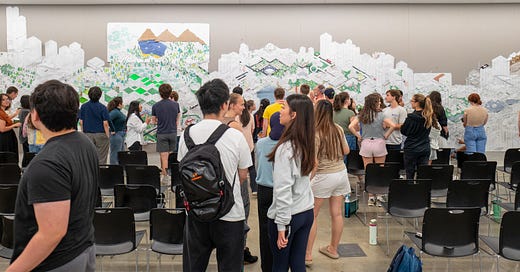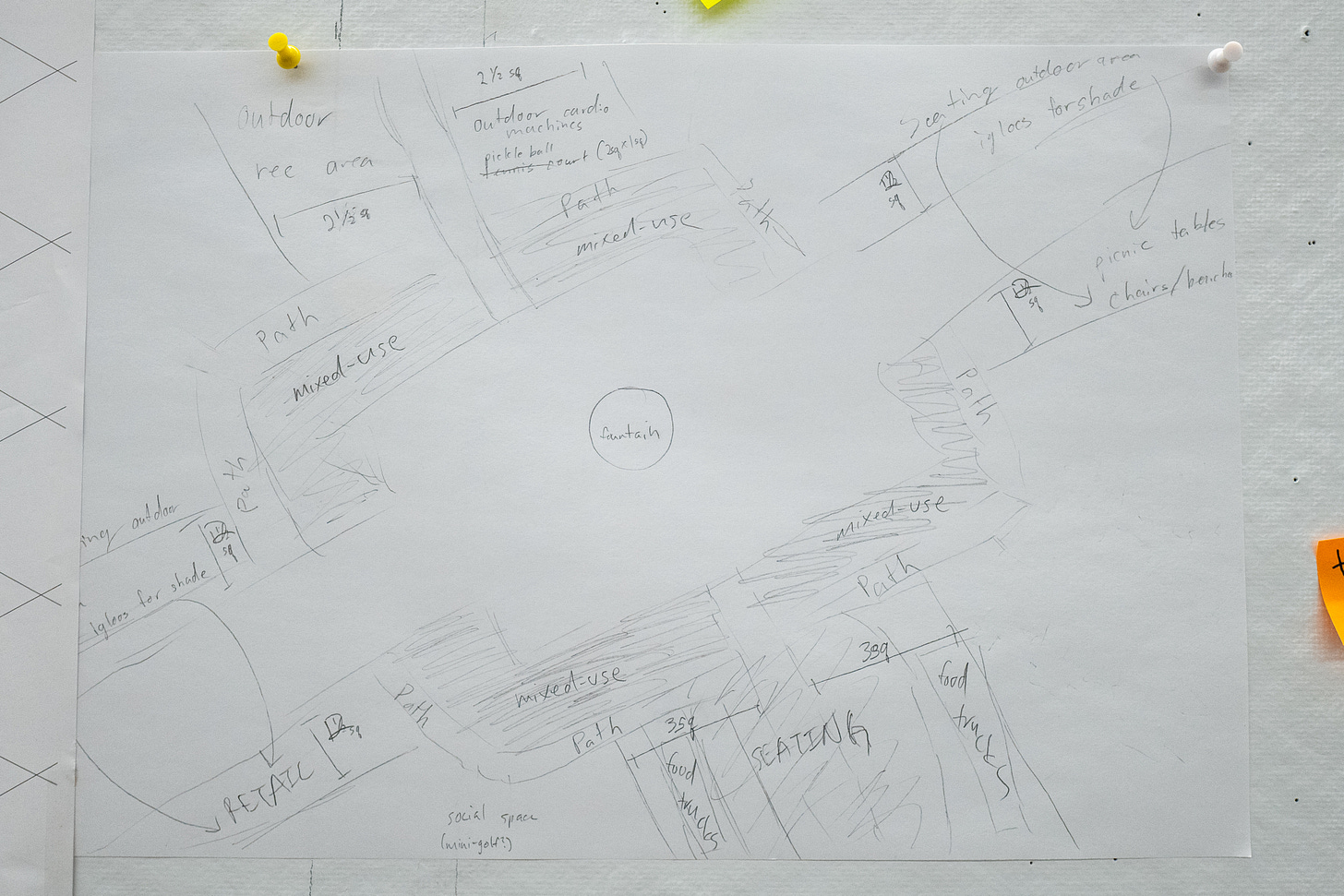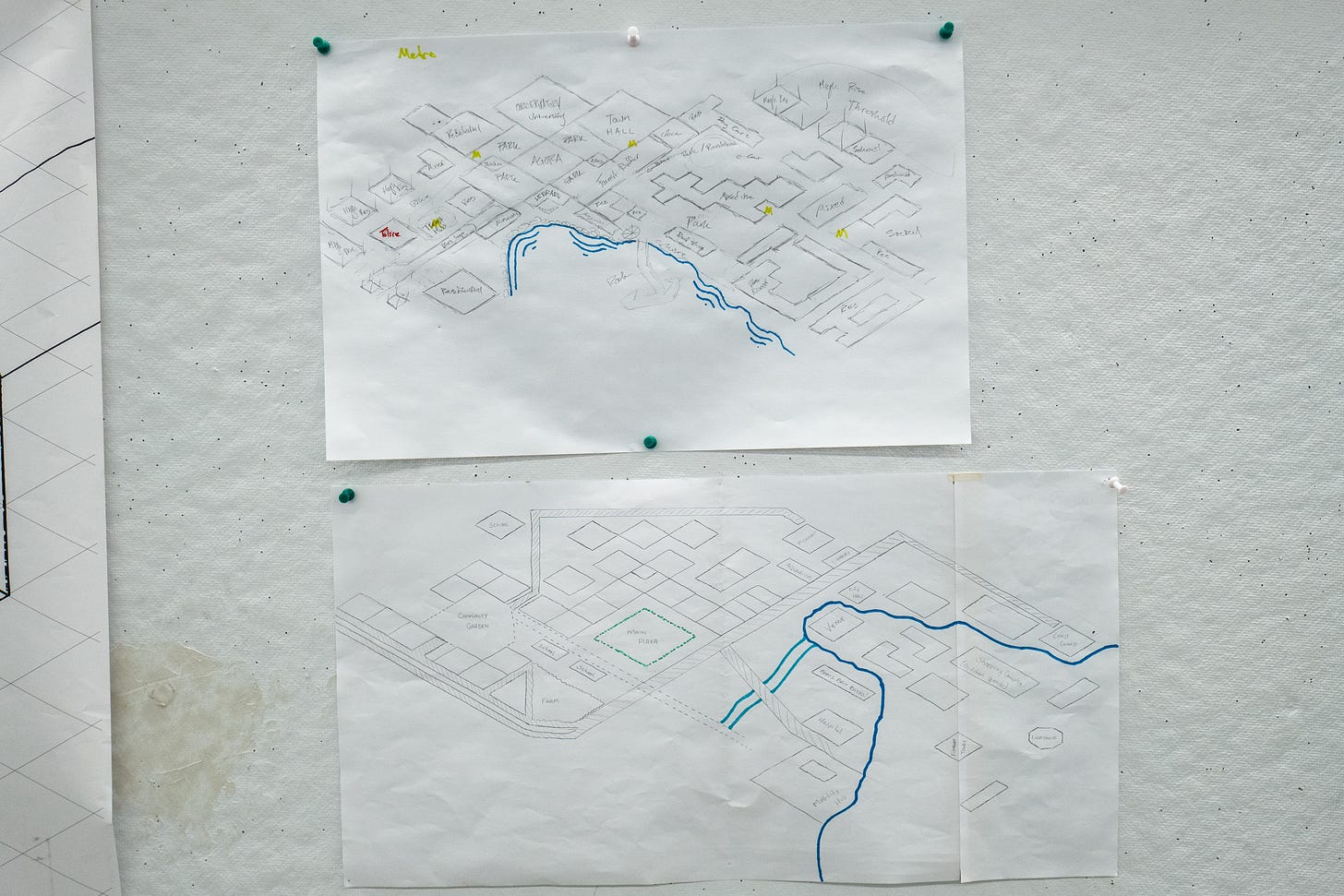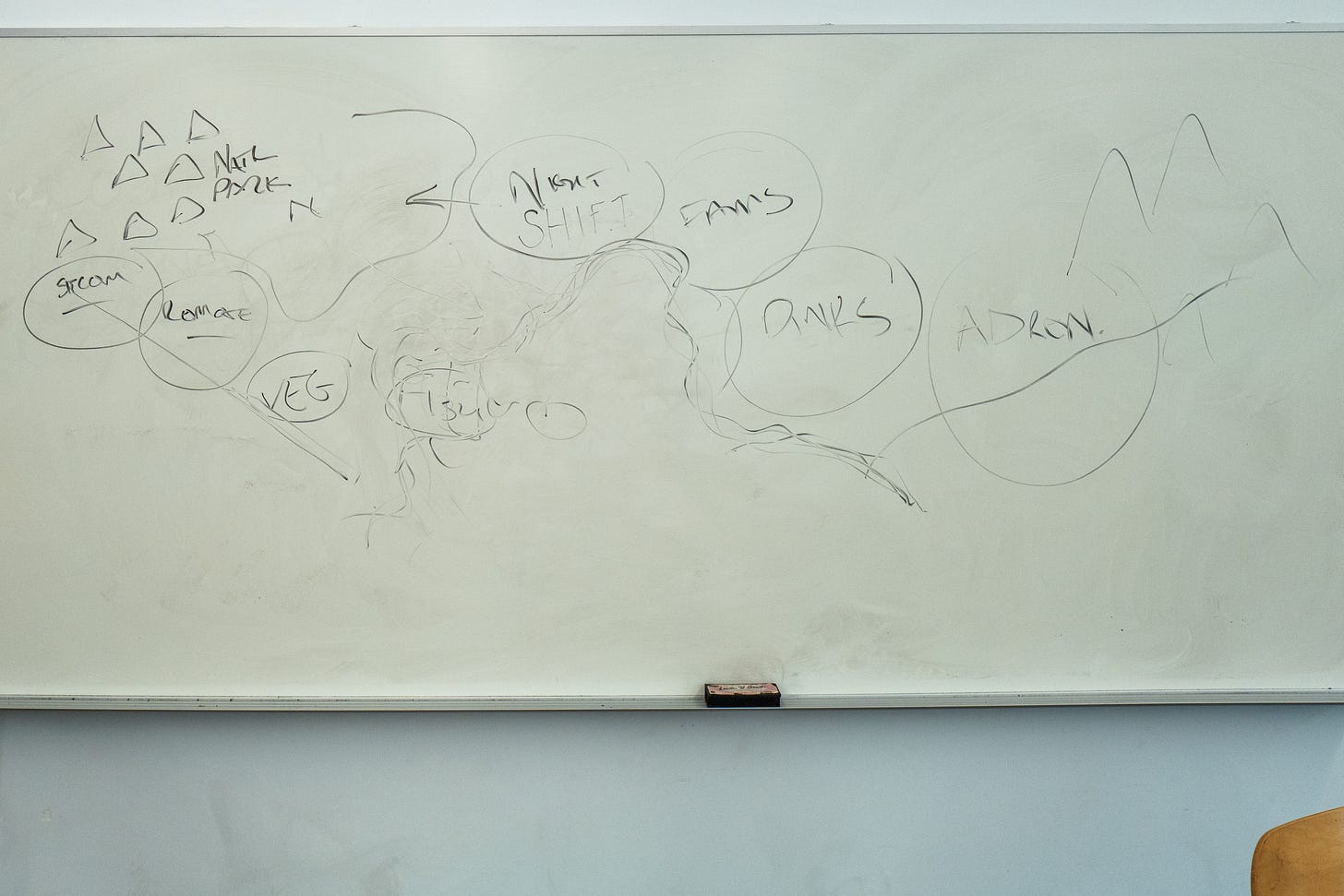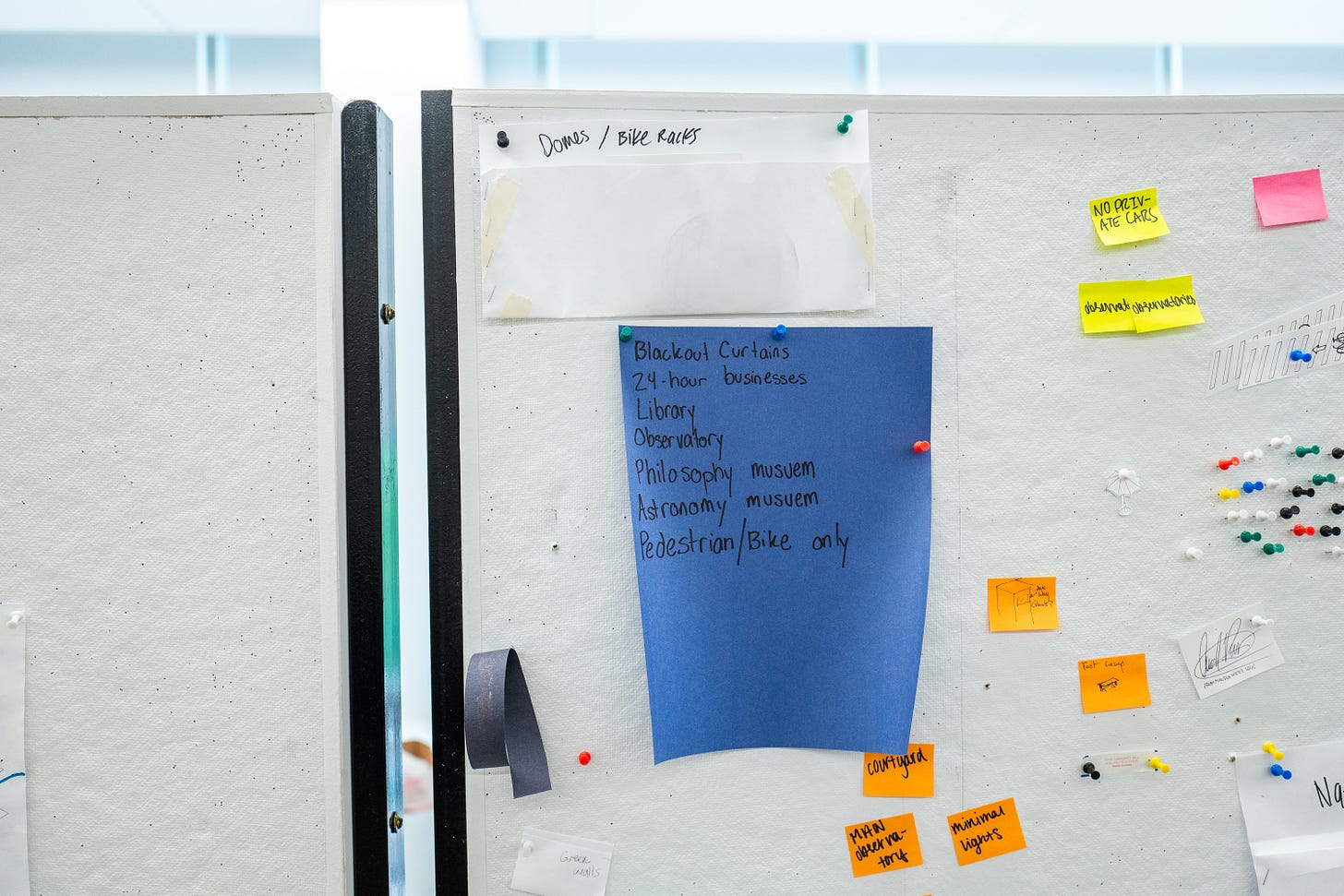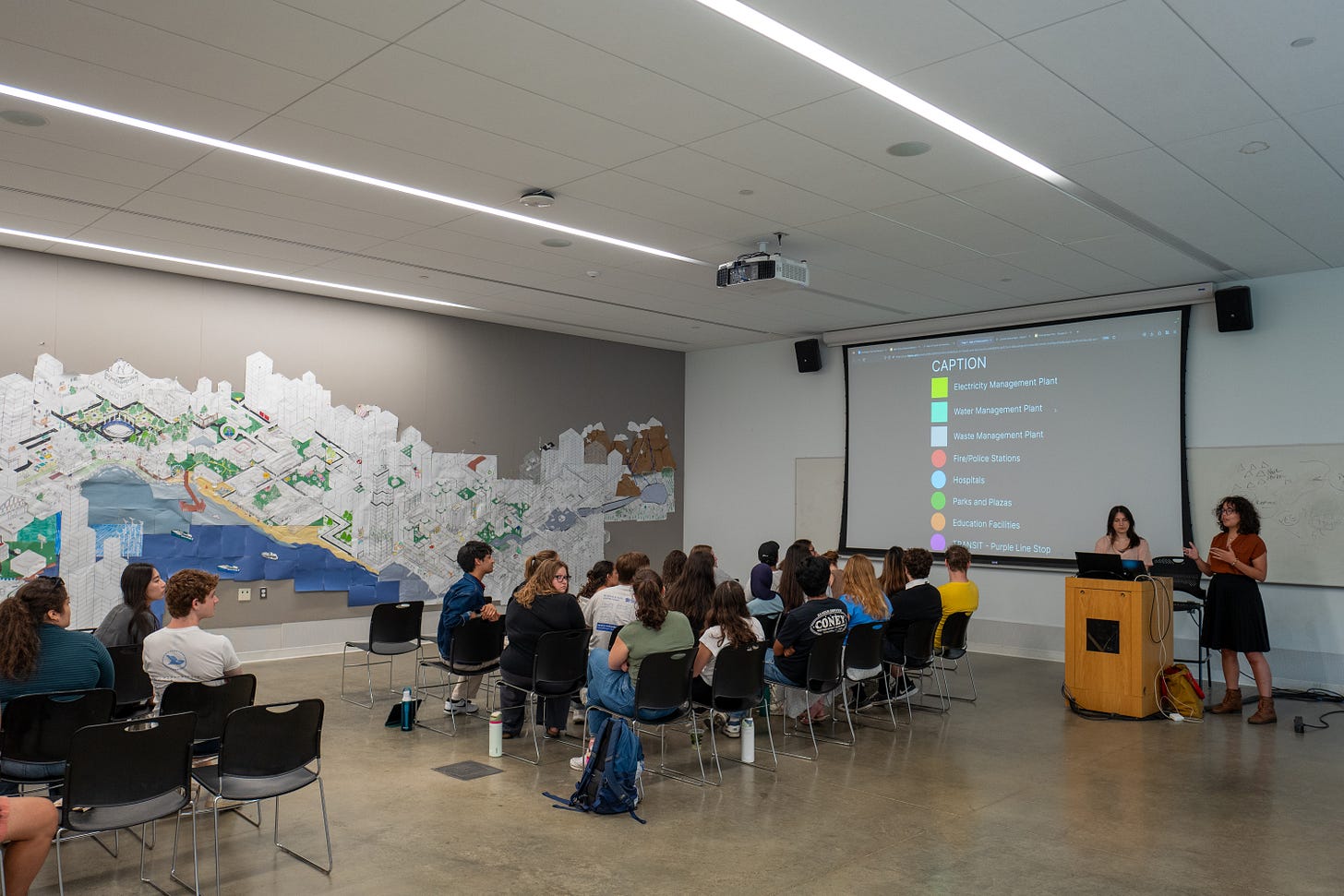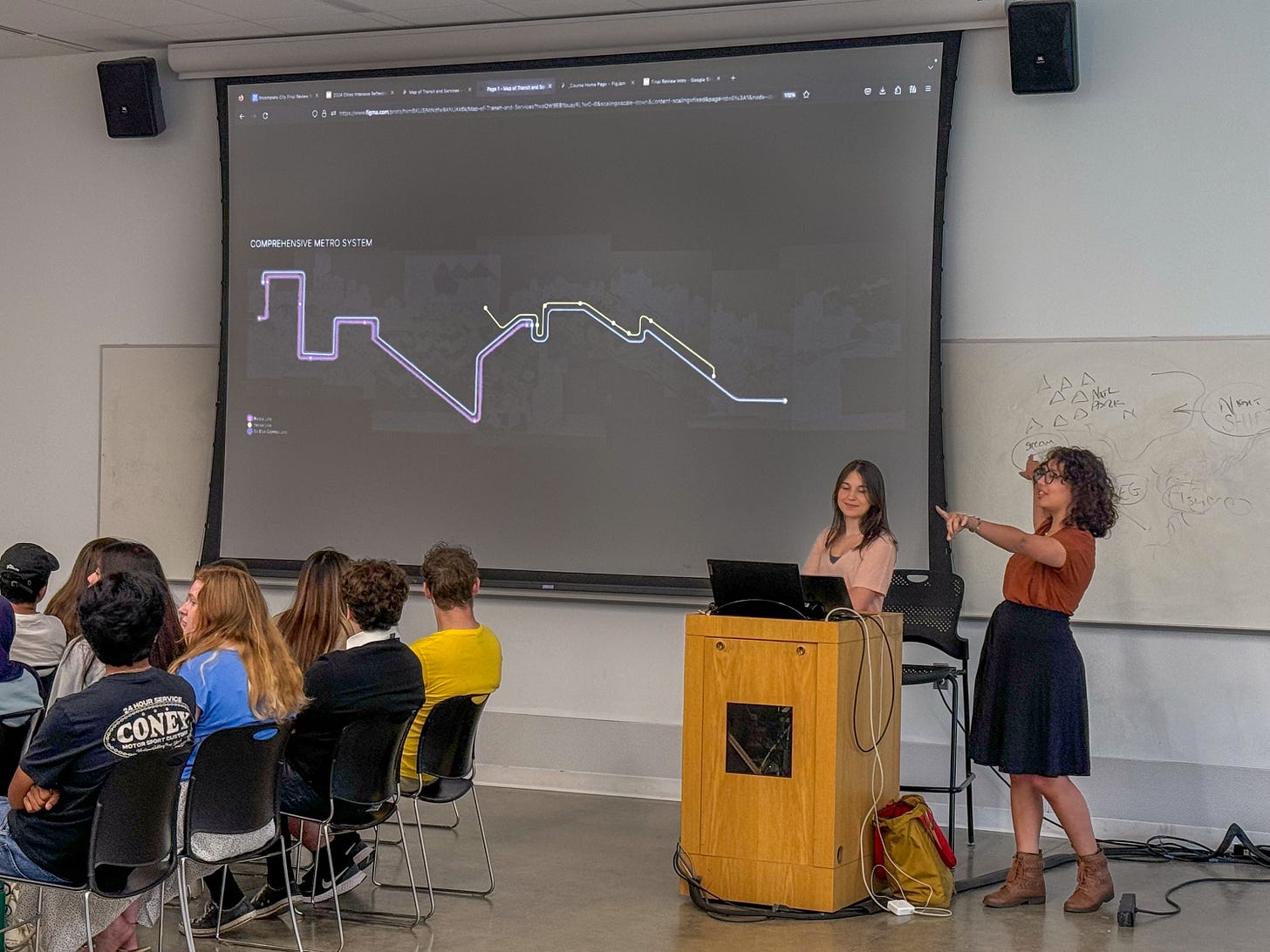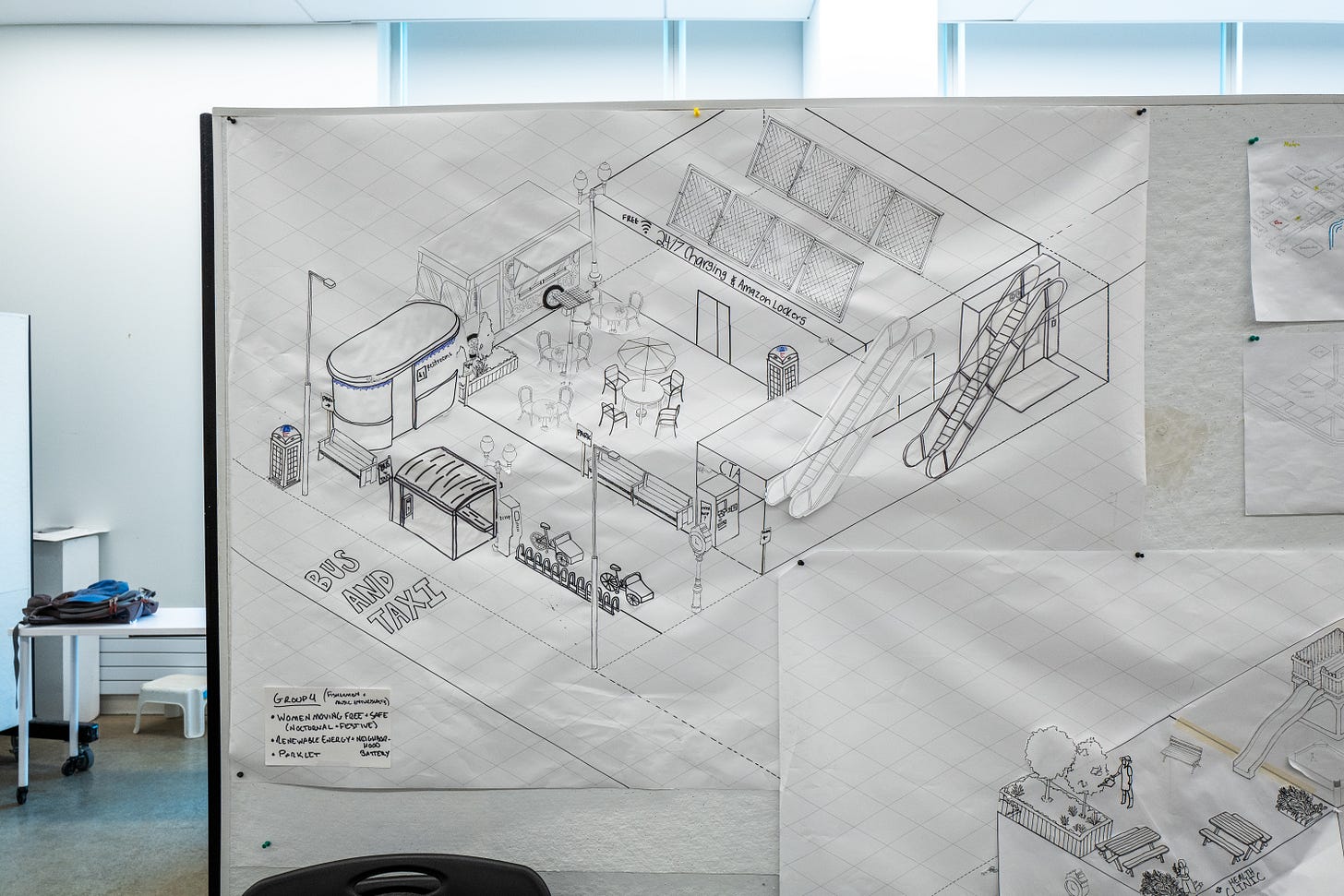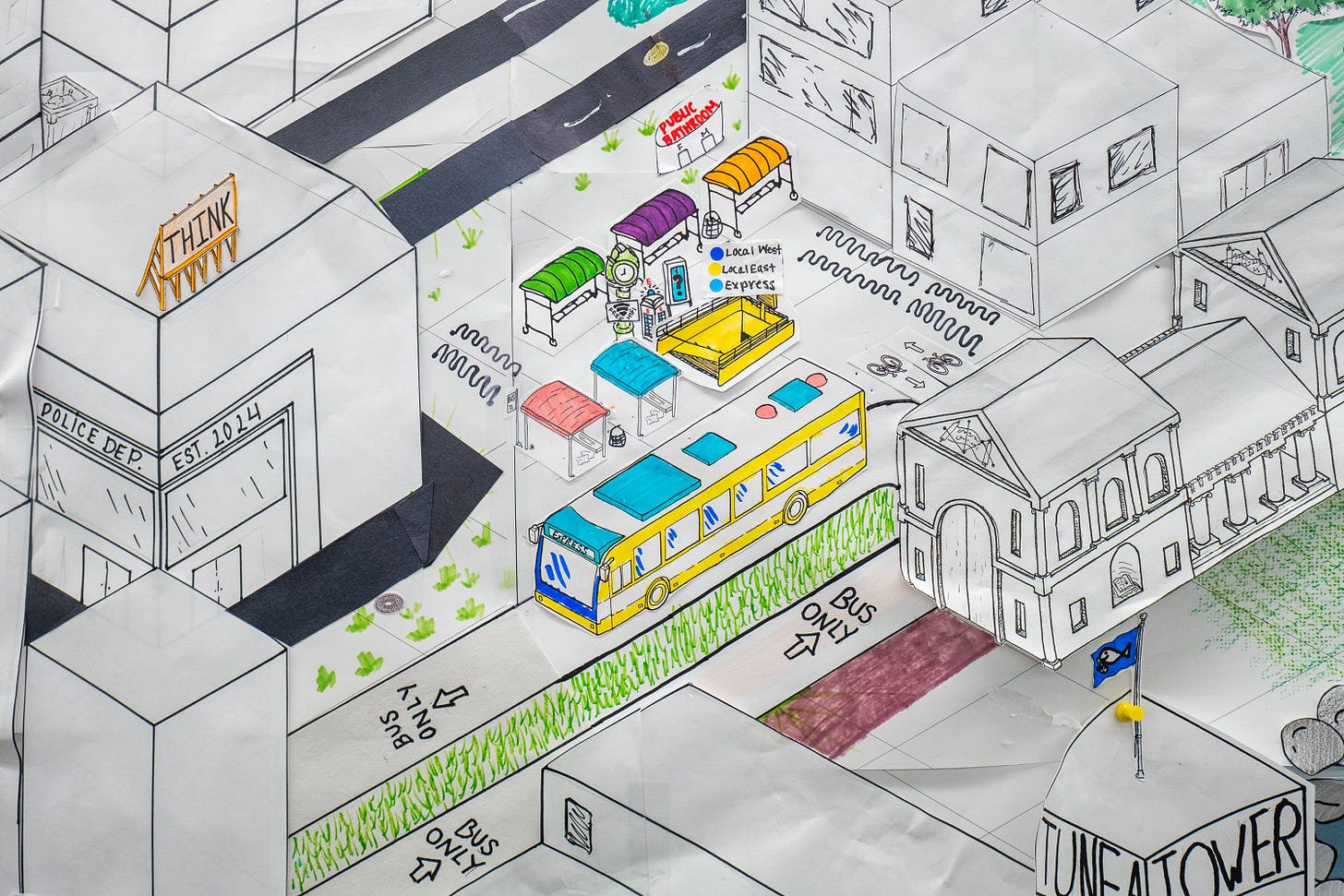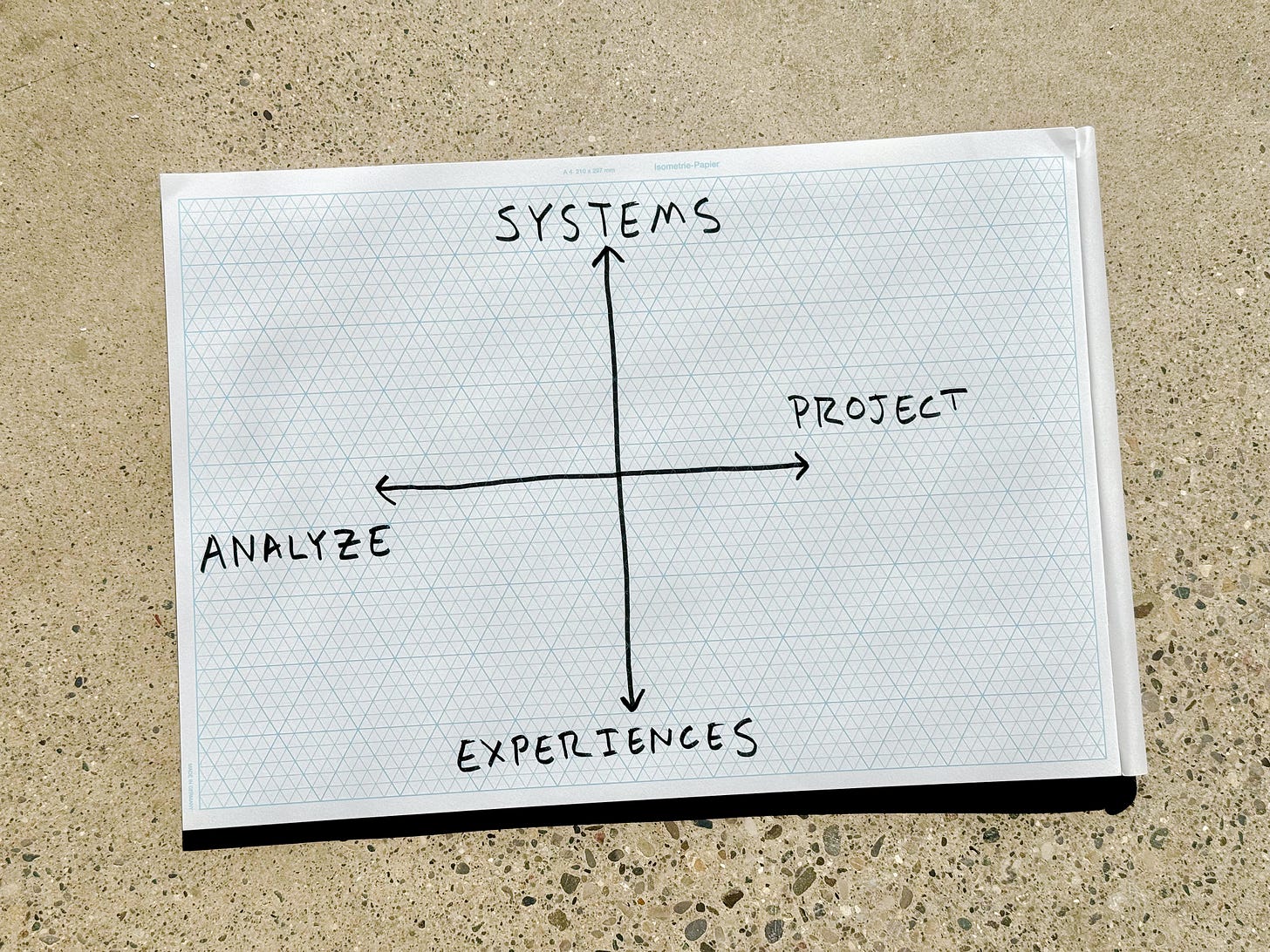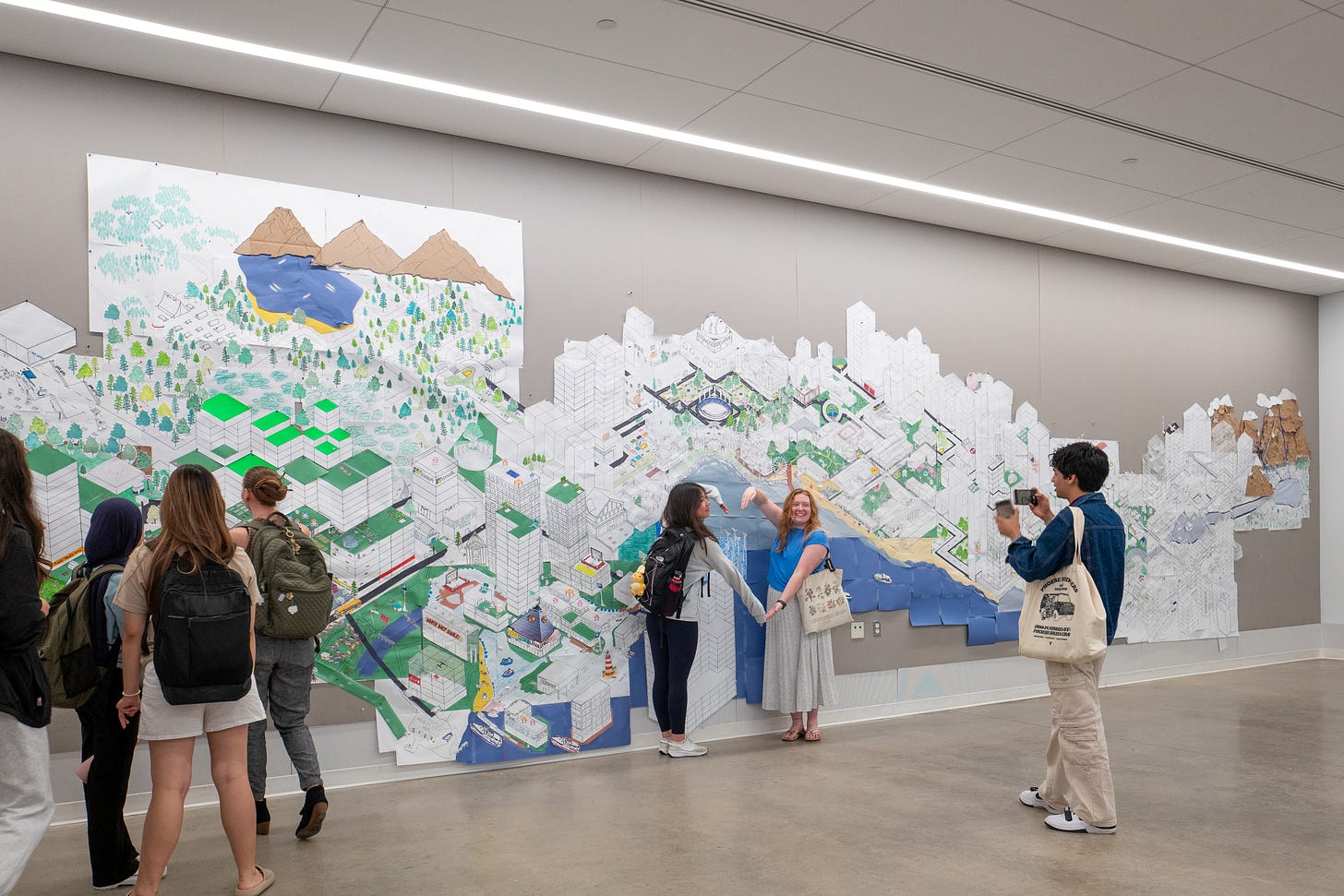As Charlie led a debrief with 40 first-year students earlier this week, capping their seven week Cities Intensive, he asked: “If you were dropped in a city you knew nothing about, what kinds of questions would you ask?” This is a special inquiry for us because it gets directly at the goal of the Cities Intensive. We want students to exit this semester with x-ray vision that helps them see the hidden systems (also the title of a fun book by Dan Nott) and to be curious enough to start making sense of places and contexts they’ve never encountered before. To be more precise, we want them to jumpstart the habit—because the skill of understanding cities is most surely asymptotic.
While students spent most of the semester developing this skill on trips to Detroit, Cleveland, and Chicago, the final day of class a couple days ago involved a handful of invited guests making sense of a place new to them because it was entirely a creation of the students’ own minds. Keep reading for a tour of this year’s Incomplete City, an annual ritual here in the Urban Technology degree program at University of Michigan.
💬 Hello! This is the newsletter of the Urban Technology program at University of Michigan, in which we explore the ways that data, connectivity, computation, and automation can be harnessed to nurture and improve urban life. If you’re new here, try this short video of current students describing urban technology in their own words or this 90 second explainer video.
Incomplete City 2024
If you’re thinking, “aren’t all cities incomplete?” here’s the recap of how this works. Incomplete City is a game wherein groups of students draw a village for 100 people responding to a very specific set of user needs. Then we merge pairs of villages, then merge again and again until all of the groups become one and the city is a single boisterous whole. This is all done with cutting, pasting, and drawing on paper. Here are the results, with a crowd for scale. That materialized through a couple weeks of work under the direction of Emily Kutil who taught UT 103 this semester.
As with last year and the year before that, the result is a physically impressive isometric drawing of an imagined place, but the real outcome is hours of practice negotiating the diverse and occasionally conflicting needs of the imagined residents of the city. This year the user groups included vegans who have an annual eating competition, fishermen who are music enthusiasts, night shift workers who dabble as philosophers and astronomers, aesthetic enthusiasts with a lot of kids, DINKs, and more.
Alongside the mural itself the room was scattered with maps, diagrams, and annotations, which are all evidence of the students trying to make sense of their “making” activities. Here are groups planning land use and transit within a village:
And here’s a sketch of the overall geography of the city. You can see the individual neighborhoods called out in relationship to the emergent addition (discovery?) of water and mountains:
“No private cars,” “minimal lights,” and “courtyard,” are among the post-it notes I found on a pin-up board, evidence of the group signaling to itself where different features were to be drawn in. Collections of thumb tacks and “sticker sheets” of urban elements such as the stack of crosswalks seen on the right of the image below are also familiar sights during Incomplete City:
In prior years we’ve seen the students self-organize into different committees, which also happened this year with an “urban planning committee” that conducted analysis on things such as energy generation, waste management, public space, educational facilities, and transit connections. As part of the presentation, the committee showed a series of maps made in Figma annotating the mural as proof that services were reasonably accessible.
Mobility was the theme of a half-day workshop the students did in Chicago with the Shared-Use Mobility Center, wherein teams designed shared use mobility hubs. These are small plots of land that provide access to multiple modes of mobility (bikes, bus, ride hail, train, package drop off/pick up), services (food, electric charging, internet), and dignity (bathrooms, public space, clear wayfinding). That exercise culminated in drawings like the one below, which Phil wrote more about in the last issue.
The workshop’s outcomes were later retooled (and shrunk) for use in the mural itself, such as this shared use mobility hub serving a mixed-use district filled with housing, commercial spaces, astronomy research, center, and a police department.
Seeing details like wayfinding at the small scale and the transit map at the large scale confirm what I already knew: Emily Kutil and Phil D’Anieri (concurrently teaching UT 103 and UT 102 respectively) pulled off a heck of a semester traversing the space of what has become an important 2x2 diagram for us, seen below.
The diagram captures our interest in teaching students to see the connections between the ephemeral and the enduring, the experiential and the systemic. Particularly when students later move into designing technologies, this spectrum is a useful alternative to the urbanist fixation with scale. What’s the scale of software that connects you to the energy grid? Kinda doesn’t matter, right? But that grid sure is a system and sure does produce numerous and varied experiences (like a power outage in my neighborhood last night!)
The horizontal on the diagram represents a spectrum from “what is” to “what if,” as described by Einar Sneve Martinussen, Dan Hill, Ted Matthews, and Aleksandra Fischer in their introduction to The Oslo Futures Catalogue. As we attune the students’ attention to the spectrum between systems and experiences, we need to help them develop analytical skills to make sense of the status quo as well cultivate imaginative skills enabling them to invent the next.
Later this summer we will spend some time discussing the curriculum as a whole and I suspect that the 2x2 diagram is going to become more important across all of our courses as we continue to iterate and develop. For now, I’m immensely grateful to Emily and Phil for their teaching, to Mariah and Charlie who’ve kept things running right along while I’ve been out on leave with a new human, and to the students whose spirit was most definitely on display.
🖼️ Postcard from Inc_mpl_te C_ty
The photo session in front of the mural is alway my favorite part.
These weeks: Receipts, so many receipts. Snowfall. Annual lunch at Knight’s. Studio reconfigurations. Workshop prep. That summer list only grows. A new baby too. 🏃 See you at the end of August, we’re taking a hiatus until then. 🌼

